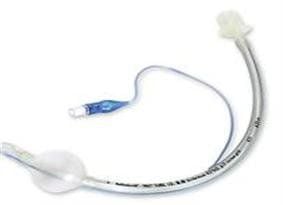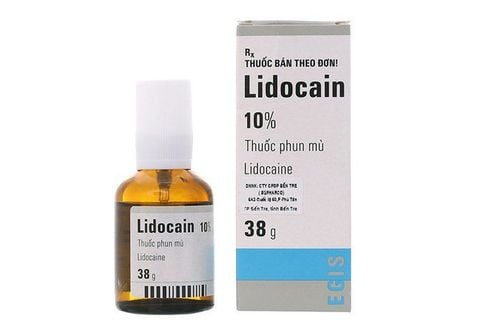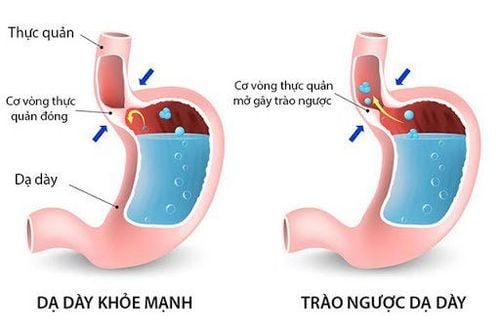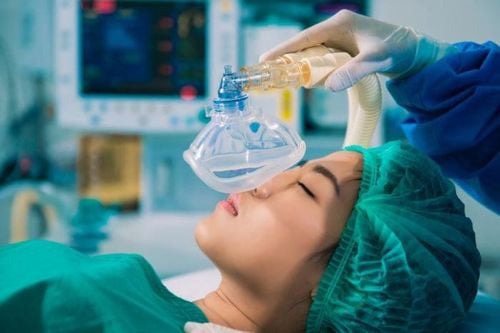This is an automatically translated article.
The article was professionally consulted with Master, Doctor Ton That Quang - Head of Anesthesia - Anesthesia Unit - Department of General Surgery - Vinmec Nha Trang International General Hospital.Endotracheal anesthesia for cesarean section on patients with acute pulmonary edema, threatened with acute pulmonary edema is a technique of general anesthesia with intubation. The main purpose of this method is to control breathing during surgery and to resuscitate after surgery.
1.Indication for endotracheal anesthesia when pregnant women have acute pulmonary edema
Endotracheal anesthesia for cesarean section is indicated when:The mother has acute pulmonary edema or is threatened with acute pulmonary edema. The medical staff does not have the facilities for general anesthesia and resuscitation after cesarean section, the doctor is not trained or is not proficient in the manipulation of general anesthesia.
2.Preparation for endotracheal anesthesia for cesarean section on patients with acute pulmonary edema


3. Procedure for performing endotracheal anesthesia for cesarean section on patients with acute pulmonary edema, threatening acute pulmonary edema
3.1 General steps Check complete records (consultation form, consultation minutes, written commitment) Maternity check: identify the name, address, see the hospital admission number on the bracelet of the pregnant woman , the time the mother fasts before surgery, checks the dentures... For the woman to lie on her back, breathe oxygen through the cannula at a concentration of 3-6 liters/minute before the induction of anesthesia for at least 5 minutes. Install a monitor to monitor vital signs such as blood pressure, pulse, SpO2 temperature... Establish an effective intravenous line In some cases, pre-anesthesia should be performed if necessary.
Open the patient's mouth, place one hand under the neck so that the neck is straight, insert the laryngoscope to the right of the patient's mouth, then move the tongue to the left, push the light deep in, coordinate with the right hand to press the thyroid cartilage to find the lid glottis and glottis. Initiate rapid induction of anesthesia and perform the Sellick maneuver in case of full stomach (press the cricoid cartilage of the patient 20-30 kg as soon as the woman loses consciousness until the intubation is completed) Continue intubation The endotracheal tube gently passes through the glottis, stopping when the endotracheal tube passes through the vocal cords from 2-3 cm, then gently withdraw the laryngoscope and inflate the endotracheal balloon. Check the correct position of the endotracheal tube (based on bilateral auscultation and on EtCO2 results), and then secure the tube with adhesive tape. Put the airway in the mother's mouth to avoid biting the tube (if necessary). In case of difficulty intubation, the difficult intubation procedure is used.

4. Criteria for extubation after anesthesia?
Pregnant women can follow the command Raise the mother's head for more than 5 seconds, TOF index > 0.9 (if any). Postoperatively, the patient was able to breathe spontaneously. The respiratory rate is within normal limits. Pulse and blood pressure are stable. Body temperature over 35 degrees Celsius. No complications of anesthesia and surgery.5. Possible complications after endotracheal anesthesia

6. Note when endotracheal anesthesia for cesarean section on patients with acute pulmonary edema, threatened with acute pulmonary edema
Determining the cause of acute pulmonary edema in pregnant women: severe preeclampsia, acute mitral regurgitation, severe mitral stenosis, circulatory overload. Provide oxygen to PaO2 >60mmHg (average 100% oxygen 4 liters/min) If PaO2 ≤ 50mmHg, it is necessary to perform endotracheal intubation with PEEP 5cm H2O to be effective Combination therapy with combination drugs: Morphine sulfate 2 -5mmg dilution (slowly intravenous), diuretic Furosemide 20mg and gradually increasing dose, Nitroglycerin (slow intravenous infusion), Dobutamine (intravenous infusion) If the mother is threatened with acute pulmonary edema, an epidural can be given. Caesarean section in Fowler position. Vinmec International General Hospital is a high-quality medical facility in Vietnam with a team of highly qualified medical professionals, well-trained, domestic and foreign, and experienced.A system of modern and advanced medical equipment, possessing many of the best machines in the world, helping to detect many difficult and dangerous diseases in a short time, supporting the diagnosis and treatment of doctors the most effective. The hospital space is designed according to 5-star hotel standards, giving patients comfort, friendliness and peace of mind.
Please dial HOTLINE for more information or register for an appointment HERE. Download MyVinmec app to make appointments faster and to manage your bookings easily.














